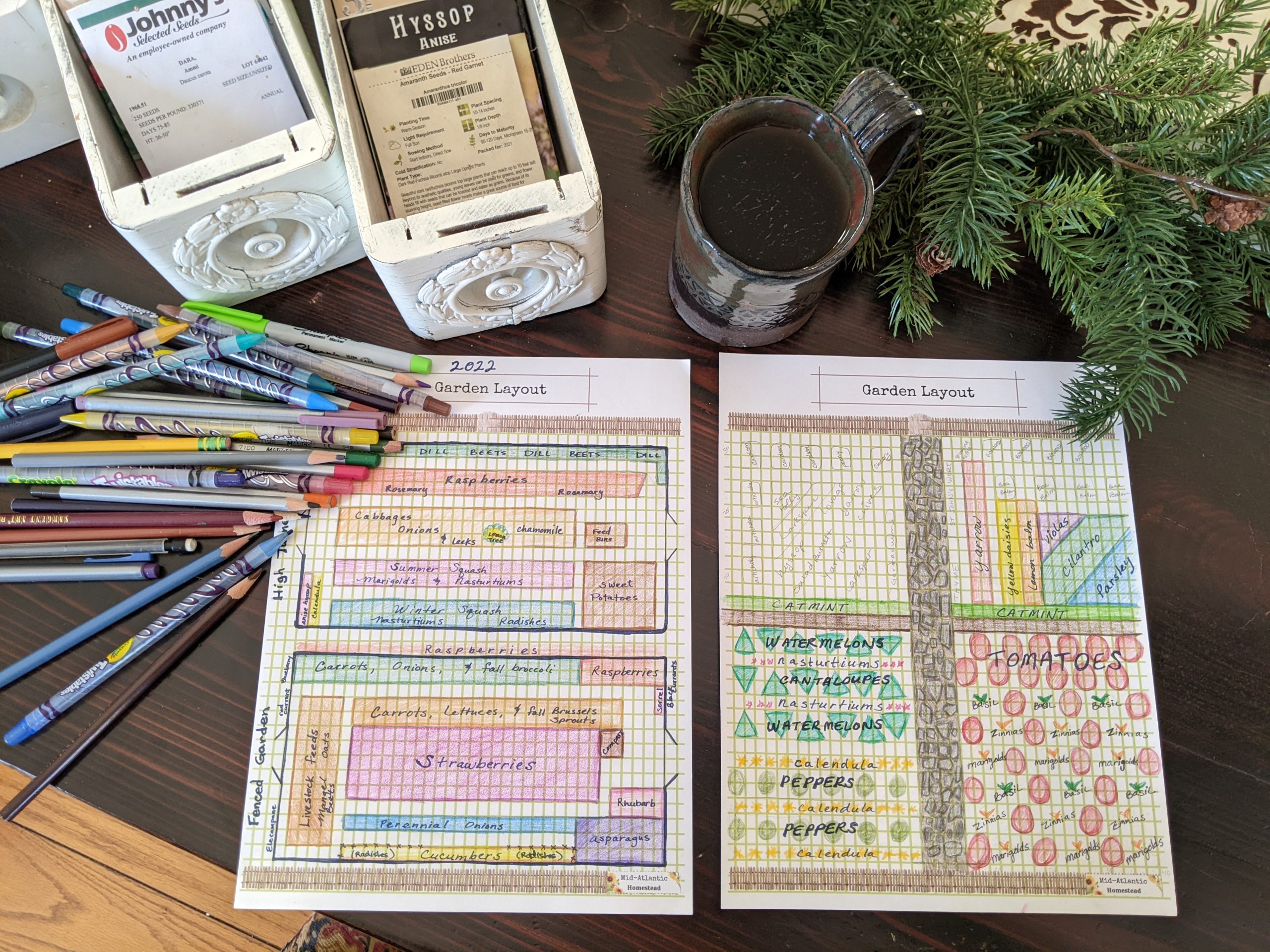
Our garden includes 3 main areas [so far anyway, I’m still trying to convince my husband that I need at least one more, haha! I’ll never had enough space for all the plants I want!!]. The garden areas are: the orchard, which is on a south facing slope in the front yard; the front yard potager, which is just outside our front door; and the back gardens, which include a 30×70′ high tunnel and a 30 x 70′ fenced garden.
Getting ready for your 2023 garden plan? Check out my Homestead Garden Planner and Journal
The Orchard
The orchard is our largest garden and the one that I have struggled with the most. I have planted 6-7 fruit trees every year we’ve been on our homestead. We almost always lose a couple of those new plantings. [That’s why I love Stark Brothers refund policy!] Planting bare root trees seems easy and I always follow the instructions exactly, but sometimes they just don’t make it. I’m not sure why, and I am still trying to learn about and understand this better.
My vision for our orchard is roughly based around permaculture principles, though I have to say “beauty” is also important to me. The fruit trees are surrounded by low bushes or herbs. Russian comfrey is planted around every bed (as a medicinal plant, soil nourisher, and weed suppressor). The whole area used to be a grassy field. I have been slowly taking over sections of the grass with layers of cardboard, manure, and mulch.
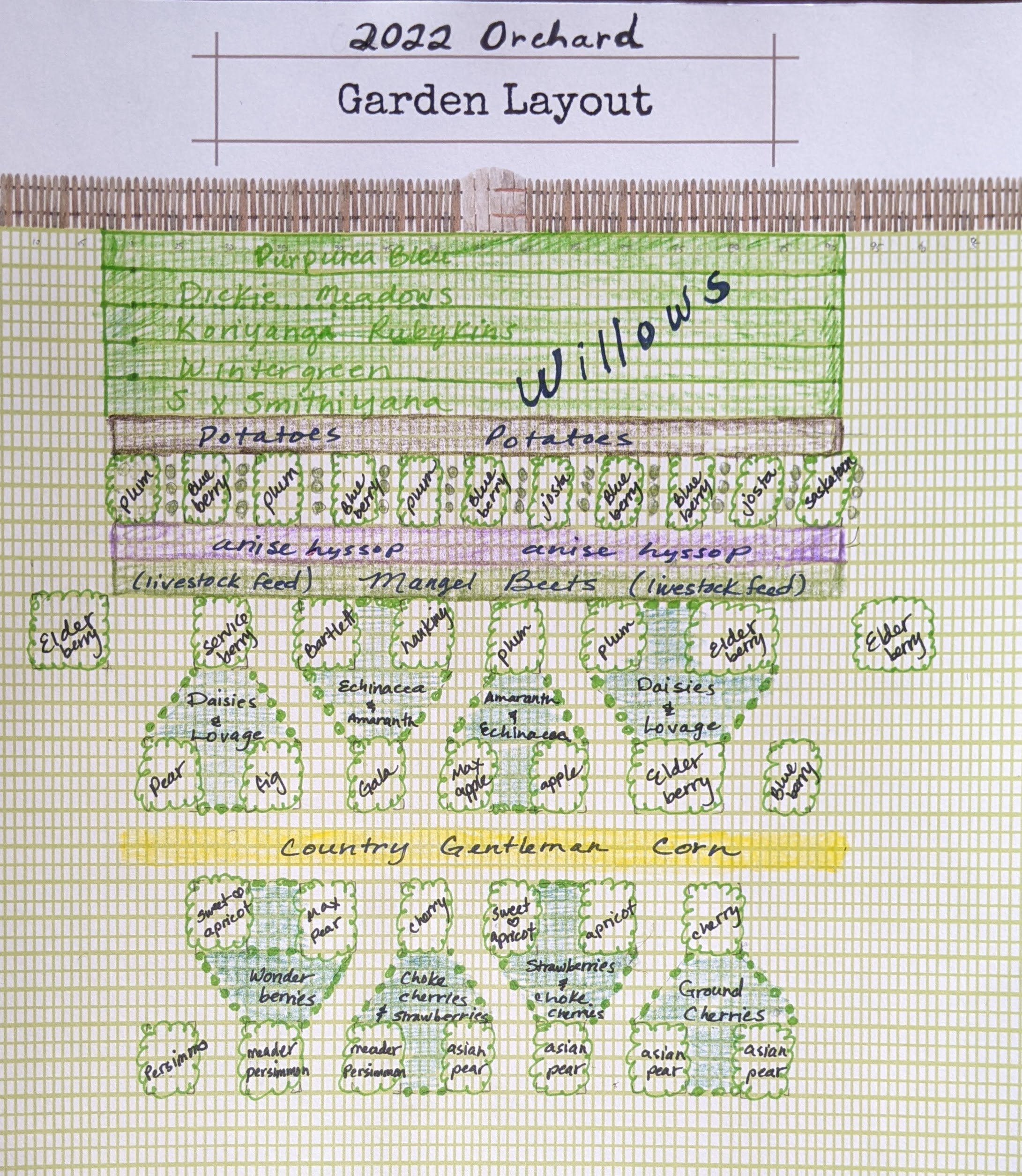
This year I will try to grow two crops in the alleyways between our trees – mangel beets and an heirloom corn variety called Country Gentleman. I’m also planning to break some new ground by planting a potato crop between the main orchard and our new willow patch.
Speaking of the willow patch — that is currently 25 young willows planted last fall. This fall I will prune them all down and use the cuttings to extend our little starter patch (hopefully) along the entire front of the orchard.
One lesson I’ve learned is that certain trees grow extremely well in Maryland without any sprays or much intervention: persimmons, asian pears, and pawpaws. Apricots, on the other hand, are especially tricky because we often have late frosts that kill their early buds.
The Front Potager
We have a lot of garden pests in Maryland! I do my best to confuse them every year. For the last two years I have had tomatoes, potatoes, and corn growing in the backyard. This year I am moving all those plants to the front yard. With at least 50 yards of ground and a house between the plants and the bugs in the back, I hope to reduce pest pressure. I will not be able to fit as many tomatoes or peppers as usual, but I think crop rotation and bug confusion :) are worth the sacrifice.
I have quite a few perennial herbs growing in my front potager. Those are largely the same from year to year. The sea holly, larkspur, and lovage are new this year – in place of the zinnias that were there last year.
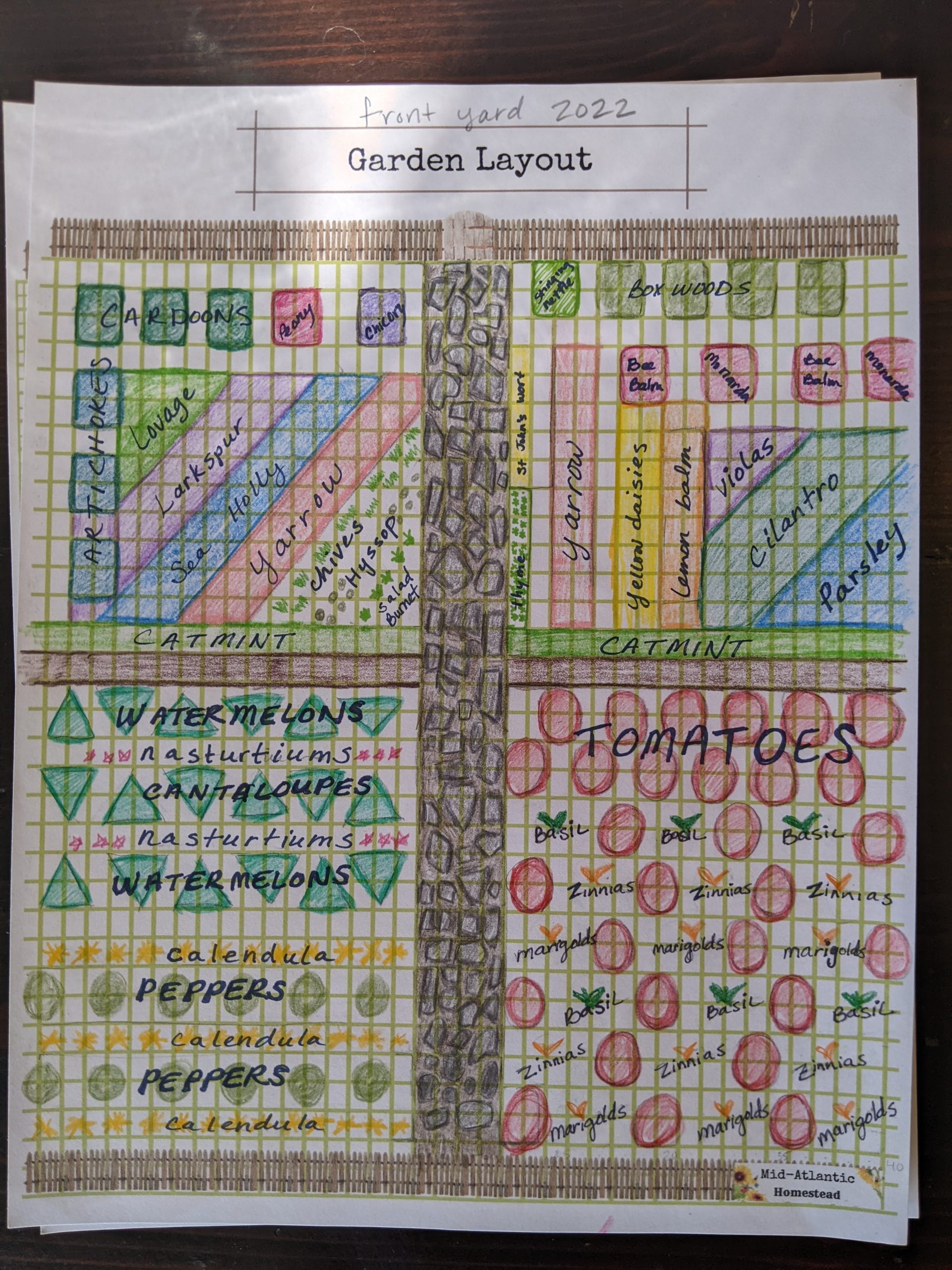
The Back Gardens: Fenced and High Tunnel
Since I’m trying to avoid the solanaceae (nightshade) family in the backyard gardens this year, the high tunnel has been tricky to plan. I am going to try planting early squash and cabbage crops under cover as well as some early spring beets. The sweet potatoes will probably spread into the squash area as the summer heats up. And once the raspberries fill in by mid summer, not much will be able to grow behind them. The fenced garden has a lot of perennials. I will fill the remaining spaces with carrots and some fall brassicas.
I’m hoping to grow a large quantity of mangel beets to supplement our rabbits’ and poultry’s feed next winter. There is a mangel beet row in the front orchard as well. This is just practice for growing an even larger quantity of mangels to nourish our *someday* flock of sheep.
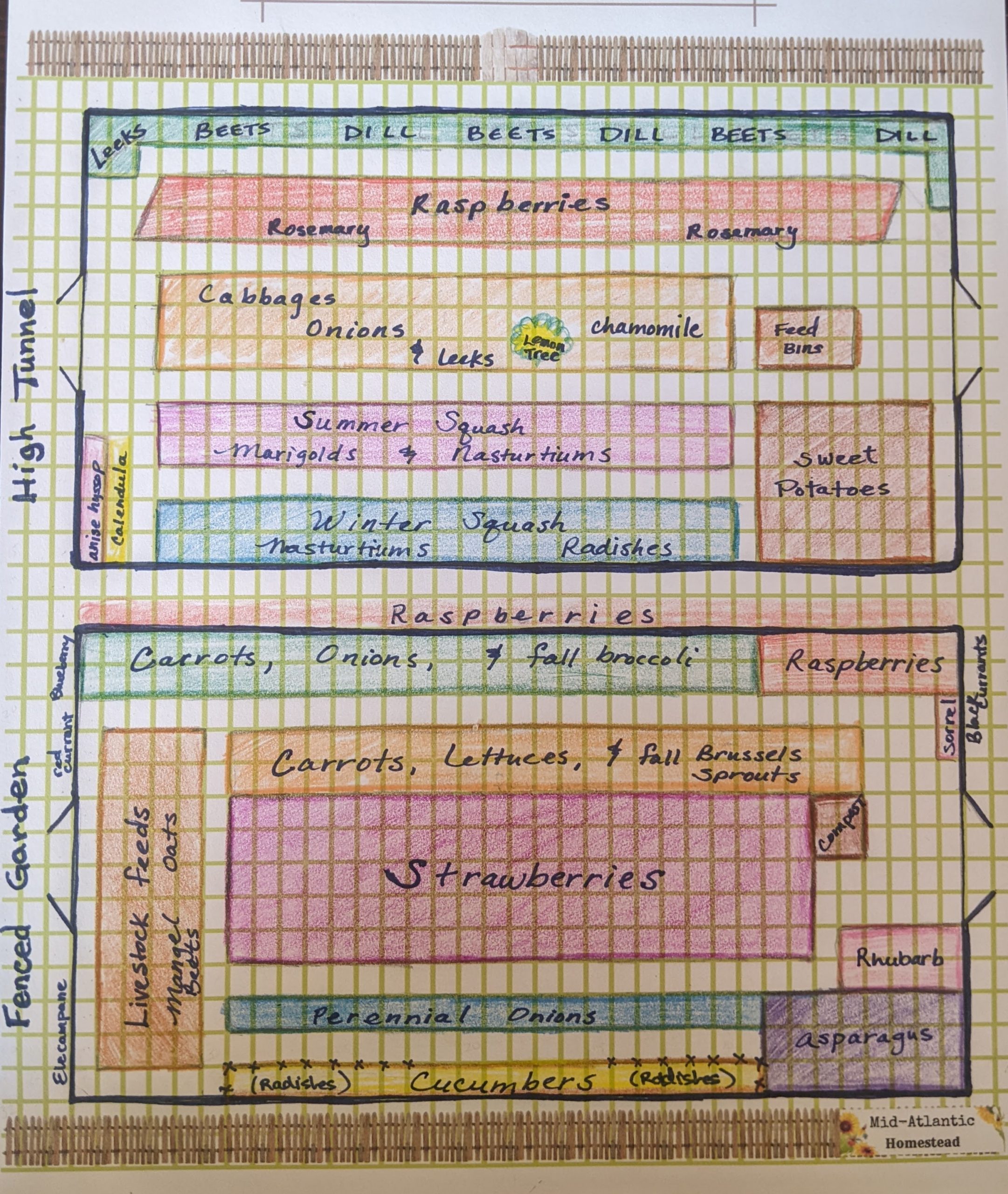
Garden Layout Printable
In case you need some cute blank pages on which to draw your own beautiful garden plans — here’s the printable page that I have been using this year. I made it for my little church garden club last year. Happy garden planning!!
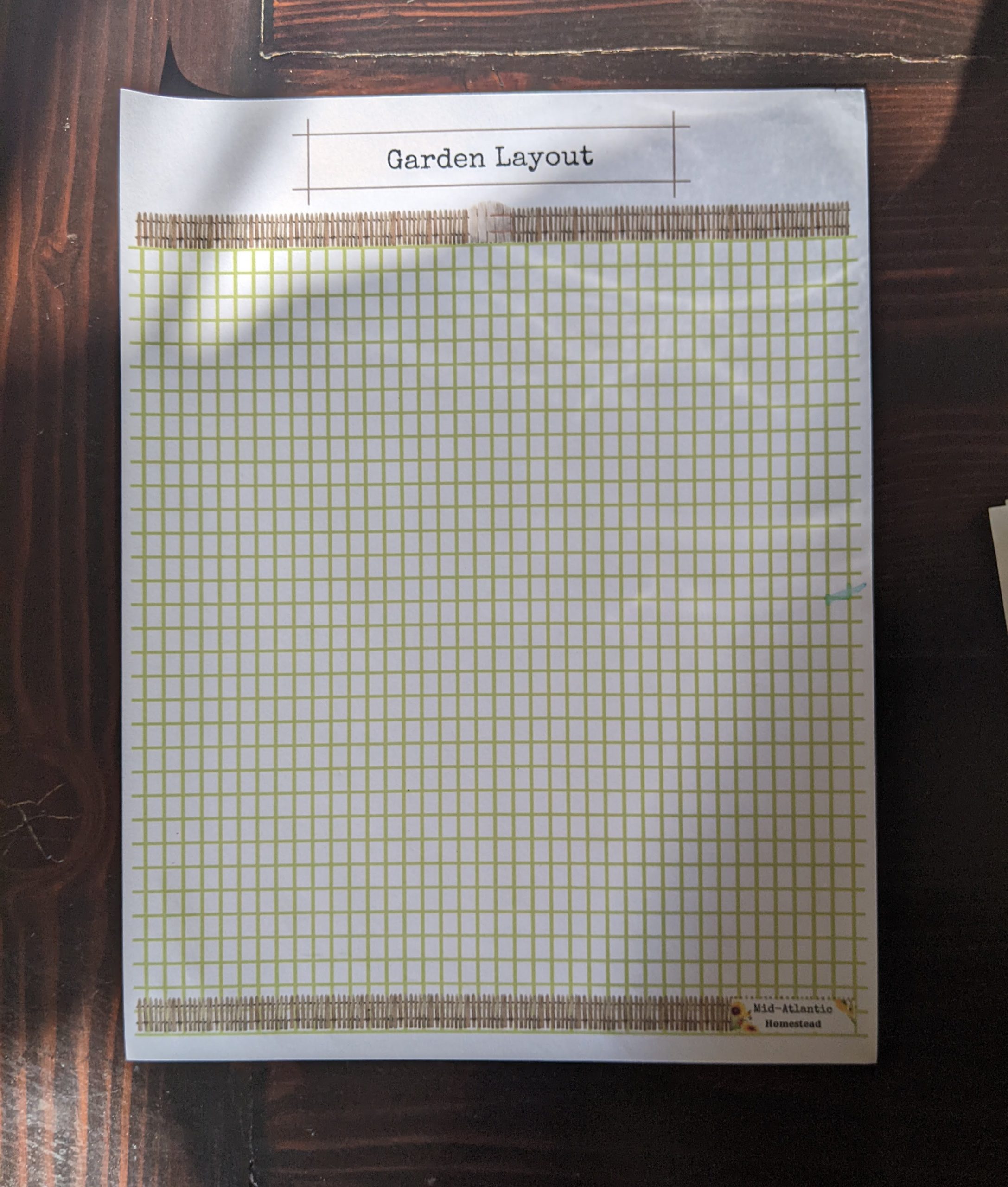




Leave a Reply